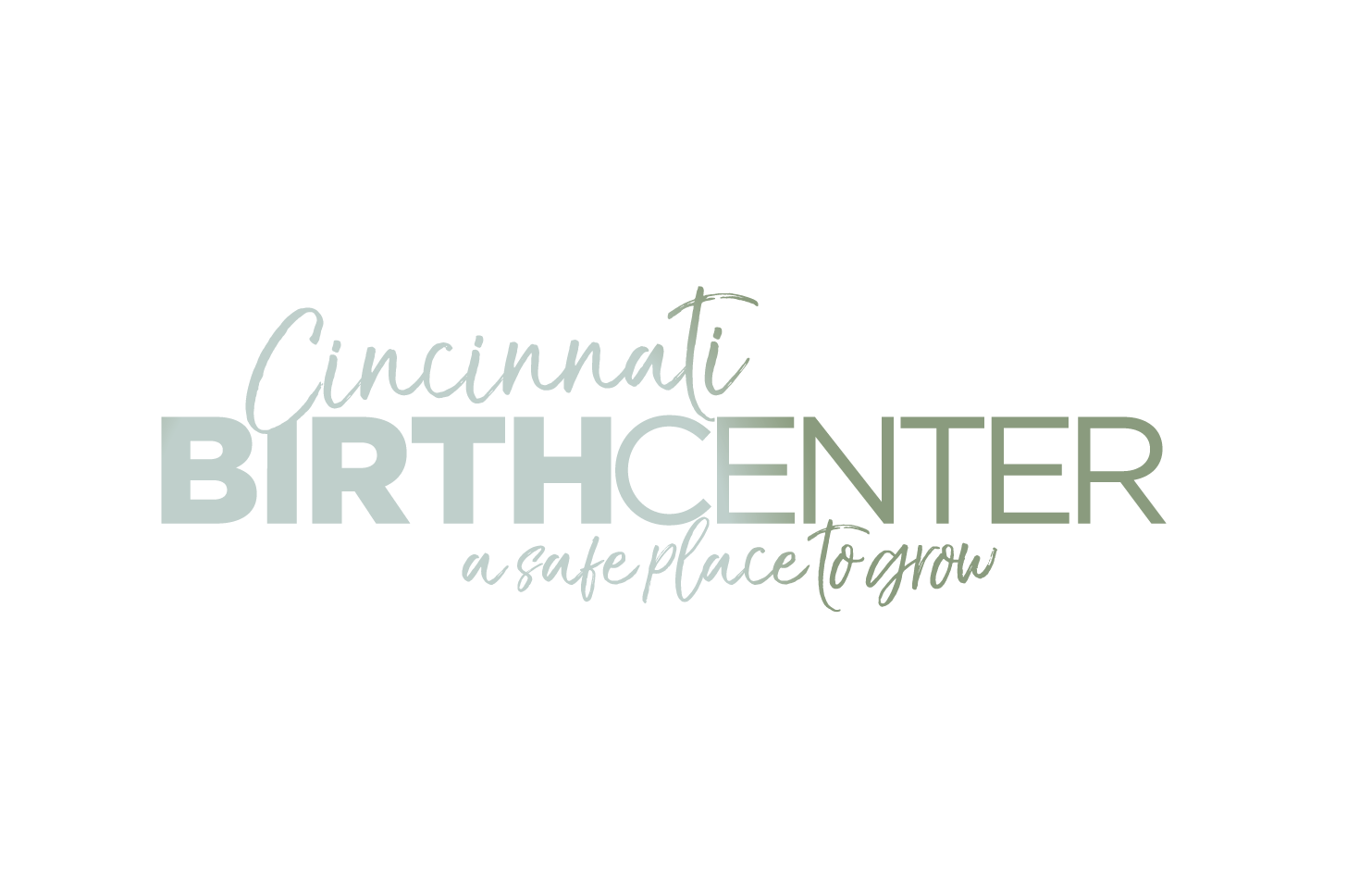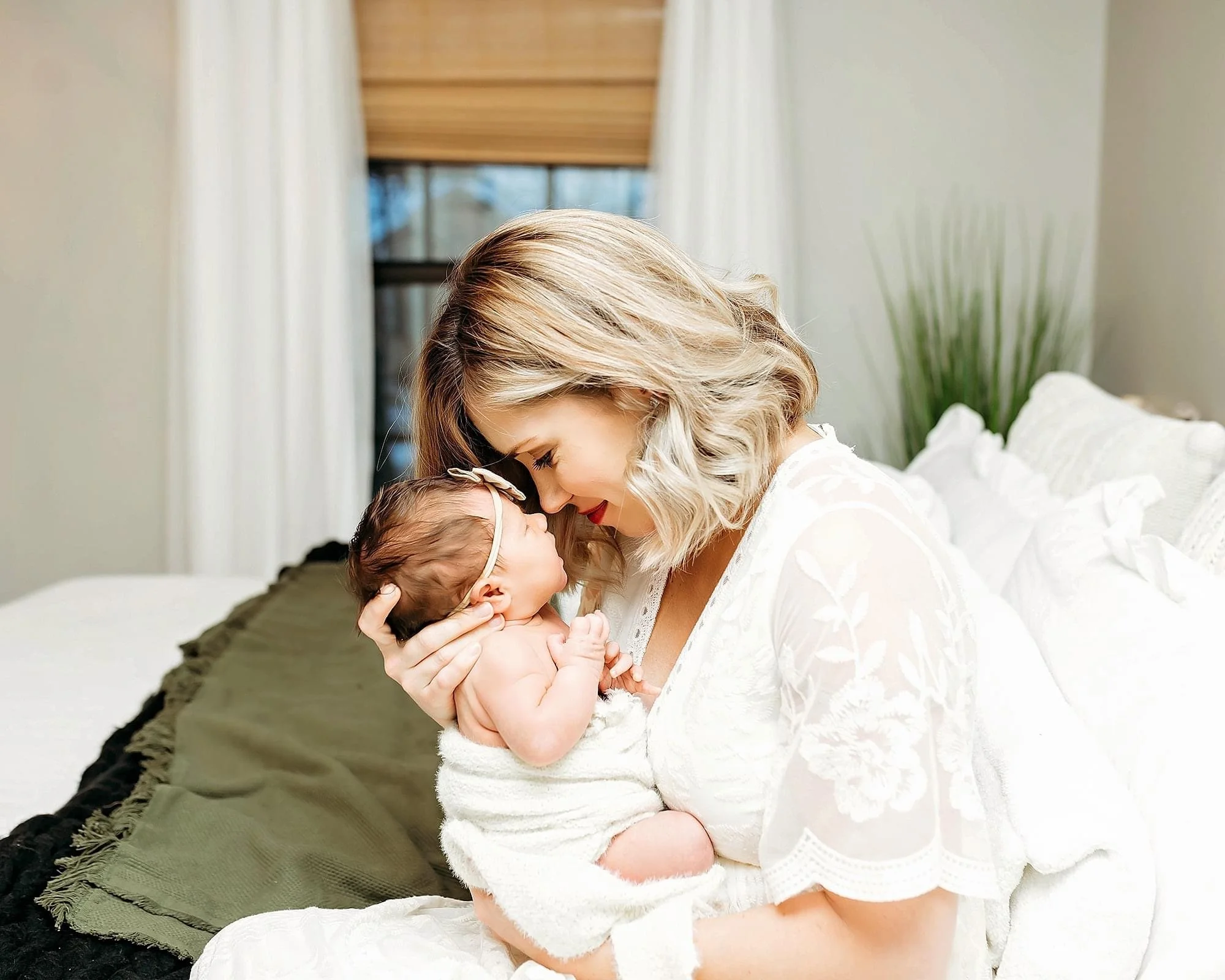What Is Postpartum Care? Here's What It Should Look Like
/Following childbirth, women enter a period called “postpartum.” During this period it can be overwhelming to know what to do in the days and weeks following the birth of your newborn. Mothers not only face the challenges of taking care of a new baby, but they also often face challenges in recovering from birth and pregnancy themselves. To ease any uncertainties you have and help make your postpartum experience a positive one, our team is sharing the Cincinnati Birth Center’s postpartum instructions that we provide new mothers with:
*Please note: The Cincinnati Birth Center cannot be held accountable regarding the use of the following information. If you’re unsure if something is right for you and your baby, please consult your provider.
Postpartum Care For Babies (First 24 Hours)
Sleep
Your baby’s first sleep may last up to 4 hours. Afterward, the baby should be awake to nurse every 2-3 hours. The American Academy of Pediatrics recommends babies be put to sleep on their back to reduce the risk of Sudden Infant Death Syndrome (SIDS). However, during the first few days of life, your baby will be working up mucus in their lungs or may spit-up. In order to prevent choking, we recommend the baby be put to sleep on their side by propping the baby up using rolled-up blankets. The baby should be kept close to you while sleeping.
IF THE BABY BECOMES LISTLESS, LETHARGIC, OR DIFFICULT TO WAKE CONTACT YOUR MIDWIFE USING THE 24-HOUR URGENT ON CALL NUMBER PROVIDED BY THE CINCINNATI BIRTH CENTER.
Eating
Breastfed newborns should nurse at least every 2-3 hours for 10 minutes (minimum) can have 1 combined sleep stretch per every 24 hour period (4-5 hours). Your breasts will produce enough colostrum the first few days. This food is perfect for your baby by providing them with everything they need, including antibodies that help prevent infections, until the mother’s milk comes in (naturally). Your baby does not need anything else, including water. Wake the baby if they skip more than one feeding.
IF THE BABY REFUSES TO EAT MORE THAN TWO FEEDINGS IN A ROW, BECOMES JITTERY OR HAS A HIGH-PITCHED SHRILL CRY, CONTACT YOUR MIDWIFE USING THE 24-HOUR URGENT ON CALL NUMBER PROVIDED BY THE CINCINNATI BIRTH CENTER.
Elimination
Your baby’s stool, known as meconium, will be sticky and dark for the first two days on average. They will have several bowel movements each day. Urination should occur within the first 24-hours and stool movements should take place within the first 48-hours. Urine is sometimes difficult to see. Placing a toilet tissue square in the diaper can help you identify urine more easily.
IF YOUR BABY HAS NOT URINATED WITHIN THE FIRST 24-HOURS, CONTACT YOUR MIDWIFE USING THE 24-HOUR URGENT ON CALL NUMBER PROVIDED BY THE CINCINNATI BIRTH CENTER.
Skin Care
Olive oil, coconut oil, or an unscented non-mineral based lotion or oil can be used on the baby’s bottom to help the meconium not stick or for very dry skin. Do not use powders on the baby because these can irritate the lungs. Blue hands and feet are normal in the first 24 hours.
IF SKIN COLOR BECOMES BLUE AND APPEARS ANYWHERE OTHER THAN HANDS AND FEET CONTACT YOUR MIDWIFE USING THE 24-HOUR URGENT ON CALL NUMBER PROVIDED BY THE CINCINNATI BIRTH CENTER.
Cord Care
Keep the diaper folded under the cord. Do not put anything on the cord. The cord usually falls off in 3-5 days. There may be a slight odor as the cord dries and decays.
IF THE CORD BEGINS TO SMELL ROTTEN OR THE BELLY HAS STREAKS OF REDNESS COMING FROM THE CORD AREA CONTACT YOUR MIDWIFE USING THE 24-HOUR URGENT ON CALL NUMBER PROVIDED BY THE CINCINNATI BIRTH CENTER..
Temperature
Your baby will not be able to regulate their own temperature for the first 24 hours, so skin-to-skin contact with you is crucial. Normal under-arm temperature in the newborn is 97°-99°. If temperature seems to be above or below normal, adjust clothing and retake temperature in 30 minutes.
IF THE BABY’S TEMPERATURE DOES NOT RETURN TO NORMAL RANGE OR THERE IS A CONTINUOUS RISE AND FALL IN TEMPERATURE, CONTACT YOUR MIDWIFE USING THE 24-HOUR URGENT ON CALL NUMBER PROVIDED BY THE CINCINNATI BIRTH CENTER.
Breathing
It is normal for your baby’s breathing to be irregular. Signs of difficulty include nasal flaring, chest retractions, grunting with breathing, or breathing very fast. Normal respiratory rate is 30-60 breaths per minute, but you must count for a full minute. Count the breaths anytime they seem unusual.
Sunning the Baby
Jaundice is not normal during the first 24 hours. To help prevent jaundice, begin sunning the baby daily. Remove clothing and place the baby in direct sunlight for 3-5 minutes on each side twice a day. Protect the eyes from light and the baby from drafts. If the weather is cloudy or below freezing, place the baby in front of a window (inside) for 20 minutes 2-4 times a day.
Postpartum Care For Mothers
Recovery
After birth, it’s important that you continue taking your prenatal supplements and remember that you are not only recovering from birth but from 9 months of pregnancy as well. Eat lots of food with protein and iron. Rest and try to sleep when the baby sleeps. Ask for help around the house. Use the peri bottle to rinse after you urinate and avoid wiping with toilet tissue (you may use it to blot dry).
Postpartum Bleeding
The amount and length of postpartum bleeding is dependent on many things. In the first 24
hours, expect to bleed like a heavy period. It will smell like it too. If you bleed a dinner-plate-sized amount onto a chux pad in less than an hour, or are soaking a pad within 20 minutes, you are bleeding too much. Keep in mind, when you lay down, your blood pools in your vagina and will flow outward when you arise.. Urinating every few hours and skin-to-skin contact with your newborn will help to minimize bleeding.
IF YOU SUSPECT TOO MUCH BLEEDING CONTACT YOUR MIDWIFE.
Expect to bleed fresh blood for about 1-2 weeks following birth. This will taper off and become whitish or brownish for an additional week or two. Nursing and resting will reduce postpartum bleeding. Other signs that indicate you may want to contact your midwife:
● Temperature above 100.4.
● Hot, burning pain in the calf or thigh.
● Blurred vision, dizziness, or fainting.
Postpartum Checklist (Cincinnati, OH):
● Call your pediatrician within 5 days to schedule an initial visit for your newborn. Ask them if they perform the newborn PKU screening. If they do not, you will need to have it performed at Children’s or the City of Cincinnati Health Department located on Elm Street.
● If you choose to circumcise your newborn you can schedule it with Dr Schwartz (513) 241-4288, Sara Ferguson (859) 512-7472, Rabbi Herszage (614) 580-0416, or Rabbi Heinemann (513) 835-5005. The cost is $300.
● Schedule a newborn hearing screen with Children’s Hospital Audiology at (513) 636-4236
Plugged Ducts
The specific cause of plugged ducts is unknown, but they are usually found in mothers who have an adequate milk supply and have not adequately drained each breast. It is a stasis or clogging of milk that occurs more frequently in the winter season. Plugged ducts can lead to mastitis if ignored and not properly treated.
Plugged ducts symptoms include:
● Tenderness, heat, and a palpable lump with well defined margins which is not accompanied by a generalized fever.
● Redness in one area of the breast.
● Sometimes a plugged duct can be visible as a tiny, white plug seen at the opening of the duct of the nipple.
If you have signs or symptoms of plugged ducts:
● Breastfeed often. Feeding should begin on the affected breast to promote drainage. Your infant’s chin or nose should be pointed in the direction of the lump.
● Avoid wearing constrictive clothing such as an underwire bra or the straps on a baby carrier
● The affected breast can be soaked leaning over a basin of warm water, then massaged
● Change positions of the infant during feedings to ensure drainage of all the sinuses and ductules of the breast. Massage the affected breast before and during feeding to stimulate flow of milk.
● Massage breasts in a hot shower or bath.
● Having plugged ducts predisposes you to mastitis, so it is important to address plugged ducts right away
Mastitis
Mastitis is most likely to occur in the first weeks following delivery. About one third of all cases occur after the infant is six months old and another one fourth of the cases occur after the infant is twelve months old. Factors predisposing women to mastitis are: stress, fatigue, cracked nipples, plugged ducts, constricted breasts, engorgement, milk stasis, and an abrupt change in frequency of feedings.
Mastitis symptoms include:
● Fatigue, localized breast tenderness
● Flu-like muscular aching
● A temperature above 100.4 F
● Tachycardia (fast heart-rate);headache; flu-like symptoms
● The appearance of a hot, reddened area on the breast, or the appearance of a boil on the breast
If you have signs and symptoms of mastitis:
● Rest, nurse, hydrate, and eat well
● Contact your provider if your signs and symptoms are worse after 24 hours and we will discuss with you the possibility of beginning treatment with antibiotics
● Contact your provider if your signs and symptoms have not improved after 48 hours and we will discuss with you the possibility of beginning treatment with antibiotics
We hope these instructions prove helpful for you and your family as you enter the postpartum period. Have further questions about postpartum care that you’d like to ask our team? Contact us.



